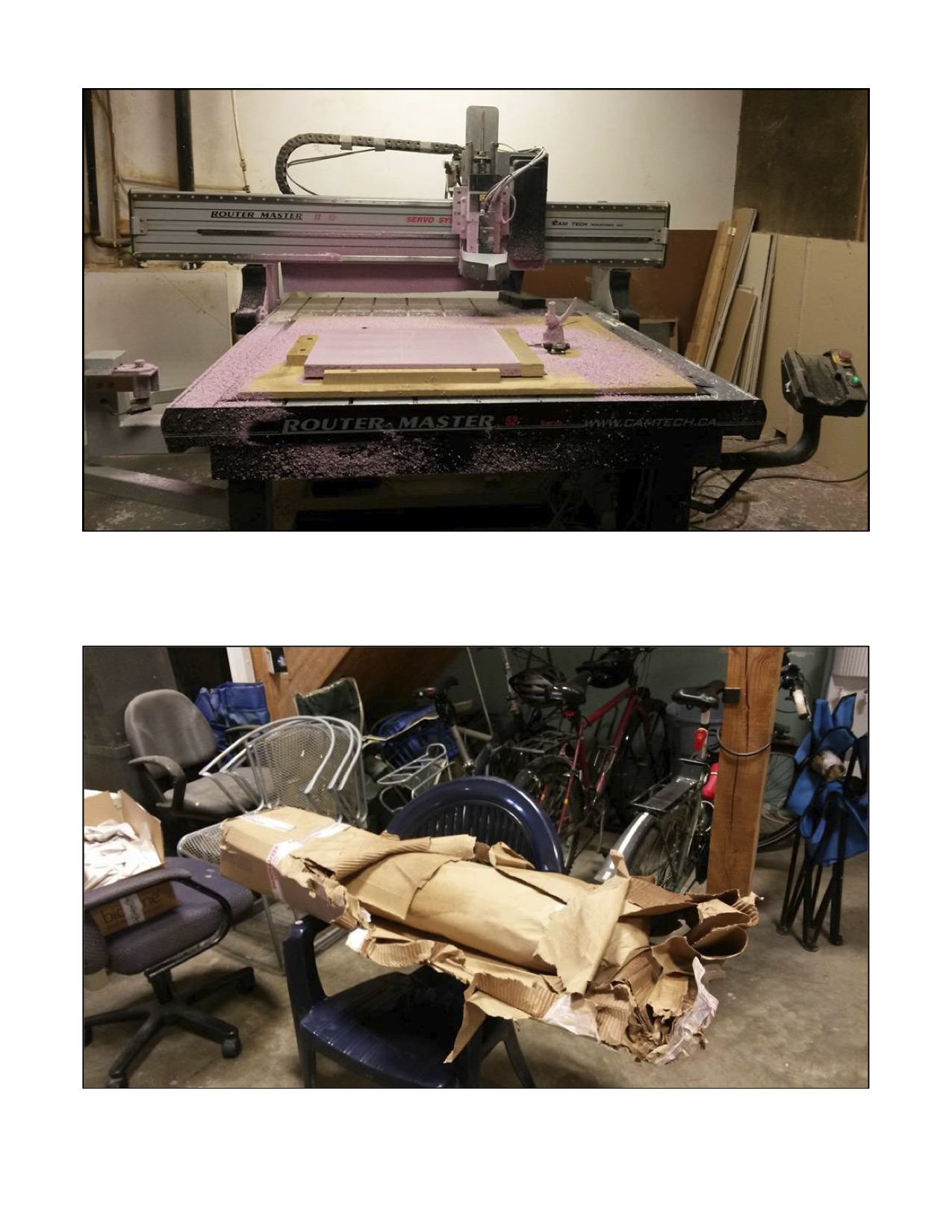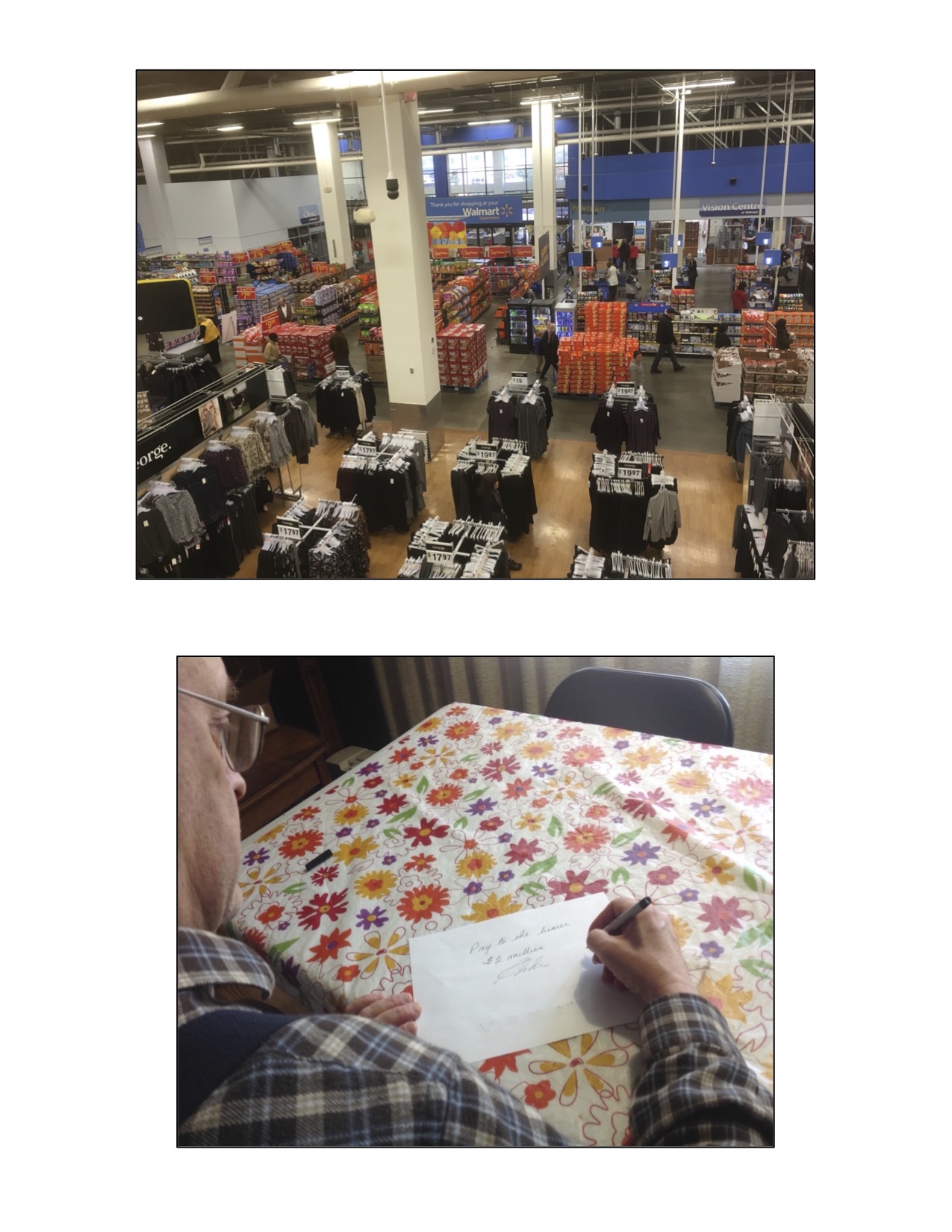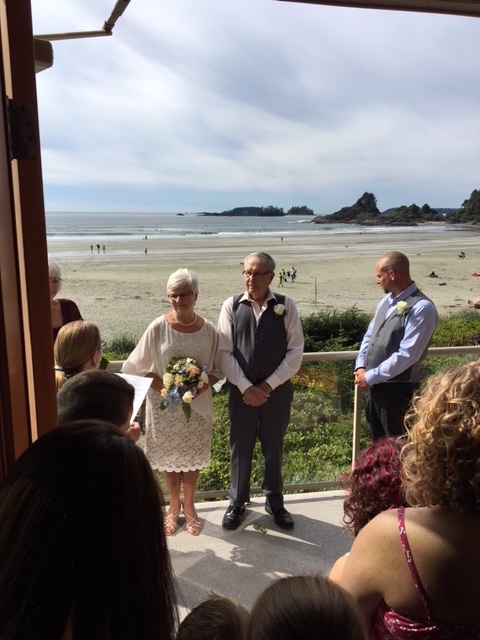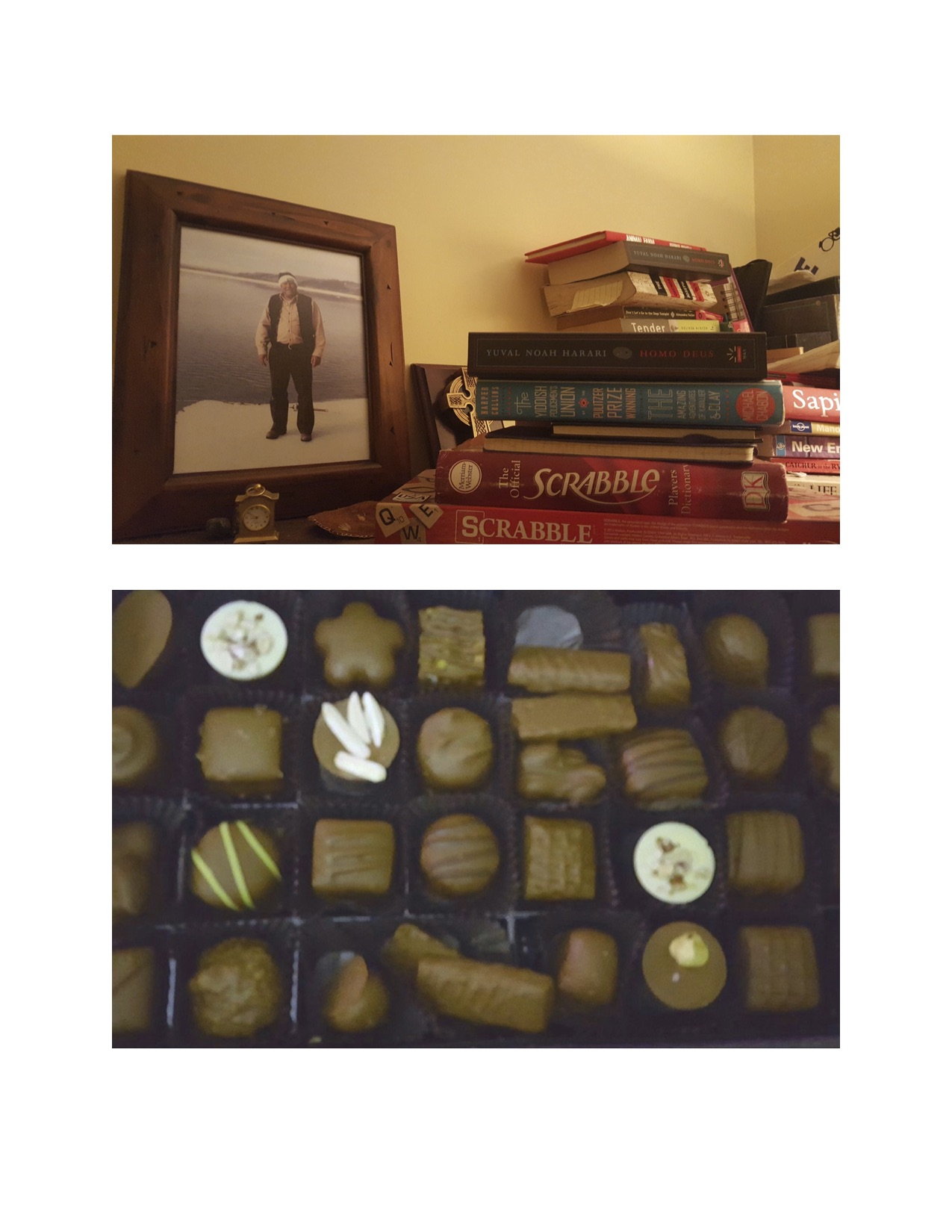Moving from stereotypes to diversity
Introduction
The photos, text and audio excerpts on this page, Moving from stereotypes to diversity, reflect participants’ perceptions on all three research questions presented to them. Their thoughts are separated into two main topics: 1) The impact of stereotyping older age presents a summary of the damaging effects of stereotyping older age; and 2) Replacing stereotypes with diversity shows the ways in which a more positive and realistic representation of older age should be portrayed by the media and popular culture in order to eliminate ageism and transform our culture into a society that respects and embraces aging as a part of life.
The topics and issues discussed by participants in this section mirror academic research on aging and ageism. In some instances, older adults have been stereotyped and scapegoated in order to deflect attention away from the lack of government responsibility for its aging population in a number of areas that include inadequate health care (specifically in long-term care for the frail elderly population, a situation that has been thrust into the media spotlight during the pandemic); unaffordable and insufficient housing for many older adults; financial insecurity; and general inequity and inequality in older age. Media and popular culture also share responsibility for perpetuating societal attitudes that have supported and enabled the inequality in our society to take place. Rather than continue to support stereotypes of older age, media and popular culture need to embrace the diversity that exists in old age, just as it does in youth. All generations consist of individuals with a variety of abilities, interests, and ideas. And like the rest of the general population, older adults come from a wide range of socioeconomic, ethnic and cultural backgrounds, and express themselves through a variety of gender roles and identities.
The impact of stereotyping old age
An invisible and internalized ageism thrives in contemporary society. The term ageism has had different interpretations since it was first coined by Robert Butler in 1969 when he described “age discrimination or age-ism [as] the prejudice by one age toward other age groups.” Although different interpretations remain, the World Health Organization (WHO) defines ageism as: “the stereotyping, prejudice, and discrimination against people on the basis of their age” (WHO, 2020). Media and popular culture have helped to foster ageism through the negative stereotyping of older people that is now widespread across the globe, and in most societies such as Canada’s it “is the most socially ‘normalized’ of any prejudice and is not widely countered – like racism or sexism” (WHO, 2020). An earlier Canadian survey produced for the International Federation on Aging in 2012, The Revera Report on Ageism, reflected the information provided by the WHO. This report found that ageism is the most tolerated form of social discrimination in the country, more so than either gender or race-based prejudice. It revealed that the most common forms of age discrimination are: 1) treating seniors as if they are invisible; 2) acting as if they have nothing to contribute; 3) assuming they are incompetent; and 4) allowing ageism to take place in the workplace and housing.
Participants felt that the two most common stereotypes of negative representations of older age they saw in media and popular culture were: 1) Aging as frailty and decline; and 2) the ‘successful aging’ component of ‘healthy aging,’ which includes ‘Freedom 55’ and the ‘fourth age super-ager,’ both of which are related to the ‘successful aging’ model. The majority of participants in the older age group and all of the younger age group recognized that the articles, images and language used by media all have the potential to encourage negative attitudes and feelings about older adults, and in doing so foster ageism in society. Through their images and interviews participants from both groups of younger and older adults condemned the negative portrayals and stereotypes of aging and older adults frequently found in media and popular culture. They also discussed the ways that media and popular culture promote those stereotypes through images in film, TV and streaming services; in text-based media, such as magazines, newspapers (that often include anti-aging advertisements on various platforms); and through the use of antic-aging and/or ageist language.
Even a single word can carry a powerful meaning. For example, defining someone as ‘elderly’ can evoke a negative image of the person being described because in Western North American culture, the words/phrases of old, older person and elderly are imbued with negative and stigmatized connotations of an older individual. There are of course other cultures where the word “Elder” carries positive meaning of respect and knowledge. For example, according to the section on ‘Elders’ in First Nations Pedagogy Online: “A culture centred on Relationship or All My Relations is the foundation of all First Nations teaching and learning. The inclusion of Elders in the process can be described as the ‘heart’ of First Nations Pedagogy. Since pre-Colonial times, Elders have been the Gatekeepers of First nations wisdom, knowledge and history. Elders traditionally hold crucial roles in supporting both formal and informal education in First Nations communities. They impart tradition, knowledge, culture, values, and lessons using orality and role modelling traditional practices” (First Nations Pedagogy Online – Creative Commons Licensing 2009). Unfortunately, older adults in our contemporary North American Western culture are not held in such high regard.
Ageist language, consisting of words for older adults and expressions that denigrate aging, is ubiquitous in North American society and disseminated by the dominant media where it reinforces negative assumptions about older age and aging (Williams & Nussbaum, 2001). This was a major concern raised by one of the older participants. She discussed the manner in which her mother (who died in a car accident at age 62) was described in a newspaper article. Due to the language of ageism, the article implied that her mother had been responsible for the accident, which was completely untrue. In this case, it was simply through the use of the word ‘elderly’ that suggested incompetence because of the negative connotations associated with this word.
The second stereotypical and unrealistic image of older age discussed by participants is the ‘Freedom 55’ image of the healthy and financially secure wealthy older adult (usually a boomer heterosexual Caucasian couple) living a lifestyle of good health, wealth and luxury in early retirement, with the freedom to travel the world with no worries or responsibilities. The ‘Freedom 55’ image, which is built on the model of successful aging, is immersed in notions of class, entitlement and inequality that implies personal responsibility and making autonomous choices about health. The ability to age successfully is dependent on individual capacity which is based on a combination of structural and personal health determinants that are not available to every individual (Chappell et al. 2008: 231). Without a level of equality, the ability to age successfully, as defined by Rowe and Kahn, “is dependent on chance and social location” (Holstein & Minkler, 2003: 790). This particular portrayal of older age was strongly criticized by one of the younger participants whose image, ‘Set for Life’ expressed her point of view on the deep inequality embedded in this concept. She pointed out that while a few older adults have this level of comfort and security, the majority do not. Instead, those older adults worry about paying their rent and having enough money left over for food. This model was also discussed by two older participants in the context of the polarity of representation of older age in popular culture: 1) ‘Freedom 55’ or 2) a frail and dependent old age.
While the negative model of aging as frailty and decline remains one of the primary stereotypical models of aging in North America (Dionigi, 2015; Binstock, 2010), other models such as the ‘successfully aging Freedom 55’ model and the ‘greedy geezer/OK Boomer’ model are strong contenders for the top spot. Intertwined with the model of aging as frailty and decline and successful aging is the entrenched ideology of the ‘cult of youth’ (linked to the anti-aging industry), an ideology that worships youth and youthful beauty, but has no use for the old and frail. That segment of society has lost their ‘value’ and consequently have been cast aside, or in Hollywood, simply removed from the big screen where they then become invisible. The concept of invisibility was raised by two of the older female participants who both produced photographs to illustrate their personal feelings of invisibility as an older woman. One of the younger female participants also created an image of invisibility, not as a reflection of her own feelings, but to depict the lack of representation of older adults in media and popular culture.
All of participants in the older group and three from the younger group mentioned the popular culture and societal bias toward youth. One of the male participants from the older group said that popular culture favours youth and being active and productive, which is embedded in our society in general. Consequently, older people are seen to have less value to society than when they were younger, measured by physical activity and productivity that are components of individualism and neoliberalism – the foundation of our contemporary society. This was mirrored by one of the younger male participants, who also talked about value. He felt that there was value in being young (in your 20s), but once those years were over you start to lose value. The notion of value was also commented on by the other male participant in the younger age group who stated that because we live in a very consumerist culture, people are like objects and can be easily discarded as they wear out.
One of the older female participants described old age, media and our society this way: “Media and popular culture just generally promote capitalism. Our society lacks a connection to nature, to the earth, to each other, and instead focuses on the wrong things – money and status. We live in a society that is all about consumption…and a lot of people have a fear of death…all of these things promote the idea that you can avoid death which of course isn’t true.” She went on to say that: “Media almost portrays seniors as the enemy. The aging population is not well regarded. It’s not a desirable thing to be old…But that’s stupid because the alternative is death… Media emphasizes what’s new and trendy. Being young and hip is in. Being old is not new, so it is not valuable.”
As noted by participant comments in the previous paragraphs, the image of the frail older adult in our culture is often met with disdain rather than compassion. Media worships the rich and famous, who are usually young and beautiful or at the very least, just rich. But they also celebrate everyday people who happen to do something unusual or dangerous. And, in terms of older adults, publicity is sometimes given to the fourth age super-ager (or superhero), who popular culture celebrates as the ideal older adult. Media focus though is primarily on the physical abilities of the super-ager – the 90-year-old marathon runner or the older person who is still bungee jumping at 95, but they occasionally also pick up stories of fourth-age older adults doing unusual and ‘inspirational’ things outside of sports-related activities, such as older adults who return to university to complete undergraduate and graduate degrees in their fourth age. Examples include people like Nola Ochs, an American women, who earned her BA at 95-years of age and her MA at 98 (Coxwell, 2020). Other older individuals continue to work for environmental and/or social justice issues well into their 90s. A well-known example is Sir David Attenborough who at age 94 is still creating nature and environmental documentaries in order to generate awareness and encourage positive action to stop the destruction of nature and our planet (Biography, 2019).
Elizabeth Renzett, a correspondent with the Globe and Mail, wrote a very insightful article in April 2020 by showing the contradictions inherent in our perception and treatment of older adults in Western society – from the celebration of “superheroes” (super-agers) of the fourth age to the “disposable” frail older adult in LTC. Writing from the UK in her article, The aged: lovely in theory, disposable in fact, she described how older adults are admired and praised as long as they do something spectacular. She provided as an example, British Captain Tom Moore, a 99-year-old WWII veteran who decided to do his best to complete 100 laps with his walker around his garden to raise money for charity. His pursuit was rewarded with accolades and public donations of approximately $24.6 million to help support UK health care workers in the Nation Health Service (Renzetti, 2020). Although this is a heartwarming story, it also raises questions about frail elderly 90+ adults who do not have the capacity, due to health issues, to contribute to society in that manner. Do they also have value in our society?
In contrast to the positive support and media attention Mr. Moore received for his charitable efforts, Renzetti drew attention to the unconscionable situation in Canadian long-term care (LTC) facilities around the poor quality of care that frail and vulnerable older adults receive. Problems in LTC are not new and have been discussed by academics and reporters alike for years, but their findings and recommendations have for the most part been ignored until the pandemic arrived. But then, suddenly conditions in LTC across the country made headlines in the media and brought the situation to the attention of the public as outbreaks and deaths in LTC started to occur with high percentages of deaths. An article in the BC Medical Journal in August 2020, stated that: “Deaths from COVID-19 have disproportionately affected seniors living in LTC. Only 1% of Canadians reside in LTC, but these deaths represent 80% of all COVID deaths in Canada” (Chung, 2020). Renzetti takes a broad approach in her analysis of this situation, questioning the basic values of our society. In summing up our relationship with the older generation, she describes a society that has at its core a neoliberal and ageist ideology:
“The message couldn’t be clearer: Yes, we respect our elders, so long as they’re rich enough to afford stellar care, or genetically blessed enough to be able to ride out the journey on their own. If that’s the case, we’re interested in their stories, their wisdom, their grit. Otherwise, forget it: Out of sight out of mind” (Renzetti, 2020).
Replacing stereotypes with diversity
In contrast to these negative images of aging and old age, all of the participants in both age groups wanted to replace these stereotypical images of aging with diversity that would reflect a more accurate representation of aging and older age. As one participant from the younger age group said: “Get rid of the stereotypes. More nuances, dimension and vibrancy” in representations on TV and in film. “No more one-dimensionality.” The majority of participants insisted that older age must be shown in a variety of positive ways that would replace the first stereotypical model of old age as frailty and decline. Elaborating on this perspective, one of the other female participants in this age group did not produce an image for the 3rd question, How would you like old age to be portrayed in media and popular culture? because she decided that “old age should not be portrayed as anything at all,” which as she explained, meant that like any other age, old age has many faces, so it cannot be expressed as just one thing. There are multiple ways of being old,” so it should be expressed that way. However, one of the participants from the older age group emphasized that representation of aging and older age also has to be realistic. There are trips to the doctor, illness, surgeries, loneliness, and loss that also occur in old age. Don’t deny or erase this part of old age, but it also shouldn’t be shown as the only aspect of aging. As people age they often lose some or all of their mobility. Media and popular culture need to provide images that highlight the importance of mobility devices (walkers, scooters and motorized wheelchairs) in helping people maintain their independence and engagement with their community, rather than give the opposite message that the use of these devices equals a loss of independence.
Despite the emphasis on representing older age in multiple and multi-dimensional ways, there was a consensus of opinion in both age groups – 4 out of 5 in the younger age group and 10 out of 11 of the participants in the older age group – that showing positive intergenerational mixing and relationships were essential in improving attitudes about older age. Two of the female participants, one from each age group, came from close knit large intergenerational families. They felt that these kinds of relationships should be portrayed in popular culture, and not in a comedic fashion or within a narrative in which conflict is the central theme (too often the case when intergenerational relationships are portrayed). The other participants had (currently or in the past) positive relationships with parents and grandparents that they wanted represented in popular culture. And some participants in the older age group had developed strong ties with their grandchildren that were quite meaningful to them that they felt should be reflected in popular culture and media.
Participants also emphasized the importance of showing the diversity in older people and their relationships. As one of the younger female participants said: “There are singles, there are couples, there are big families. It’s not just about hetero, white relationships… There are queer old people, there are big families, single old people… We just don’t really see the different variety of relationships in media when it comes to older age. I didn’t even get to sexuality but… obviously there’s lots of different variations there that don’t get portrayed.” Other participants from both age groups pointed out that romance, sexuality and late life marriage exist for many older adults but are rarely depicted in popular culture, and when they are, aside from showing older adults as asexual or nonsexual, older age romantic/sexual relationships are depicted in mocking, demeaning or comedic characterizations. Instead, romance, sexuality and marriage and common-law or LAT (Living Apart Together) relationships in later life should be presented through images and descriptions that are diverse and respectful.
Other themes were also mentioned which participants felt should be included in representations of older adults. For example, inequality in old age is all too frequent in our society and should also be depicted. Some seniors are also very physically active – hiking, biking, skiing, kayaking – and those depictions of aging should also be displayed. Older people also: volunteer, have pets, love nature, are birders, travel to exotic locations or stay in BC and go camping, are gardeners, engage in creative activities (painting, photography, dancing, singing, performing), return to college or university, continue with paid work or retire, ride motorcycles or need mobility devices to get around. Some older people are First Nations. Some were born in Canada from a European Settler background, while others are from recent immigrant families from a wide range of countries. There is tremendous diversity in the lives of older Canadians. Only a very small portion of that diversity has been represented through this research and participant interviews, but media and popular culture have the means and opportunity to celebrate and represent the diversity of our older age population. Only in this way can ageism be extinguished and replaced with respect, awareness and acceptance of aging and older age.








